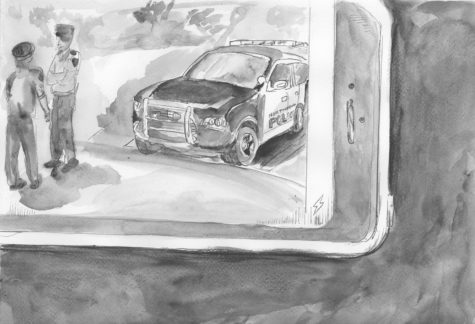Think before you share

On Tuesday, Feb. 14, a bomb threat made by Northbrook resident Michael R. Schmidt led the Northbrook Police Department and the Glenbrook North administration to declare a soft lockdown. However, not all students and teachers knew what a soft lockdown was, sparking a wave of confusion throughout the school. Some teachers carried on teaching with locked doors while others turned off the lights, huddling students together and hushing anxious whispers. Social media accounts overflowed with student updates — many anxious, many more confused.
This confusion was highlighted in Snapchat stories, Instagram livestreams and Facebook statuses that traveled from one classroom to the next. Because of the overwhelming impact of social media in students’ lives, we have become more inclined to post what is happening rather than understanding the severity of the situation at hand.
During the soft lockdown, students sent pictures with facetious captions of police cars, dogs and SWAT teams standing by outside, confusing recipients who were unable to witness the scene for themselves. Facebook posts communicated the nonchalant attitudes of many students. Most of these light-hearted updates failed to recognize the gravity of the situation, diminishing the seriousness of a potentially dangerous incident.
Many students’ apathy can be seen in their reactions to fights, such as the one that occurred in the blocks in November between two freshman boys. Instead of calling an adult for help or intervening, students pulled out their phones, taking pictures and videos to share with peers.
Whether or not we intend to belittle the severity of a situation, our natural instinct is to share the oddities from mundane life that we come across rather than act.
The lure of social media has created a mindset in which sharing content overpowers behaving in accordance with the severity of the situation. A lack of facts coupled with speculation on social media during a crisis only fosters an environment in which anxiety is heightened and misinformation is spread.
This inappropriate reaction can ultimately threaten the safety of a student body if a potential crisis were to become a reality.
If another threat to the safety of our school was to arise, we should be more thoughtful by refraining from apathetic posting in order to discourage confusion. If another fight breaks out, we should inform a nearby adult instead of assembling a crowd and filming for Snapchat.
Resisting to hit the “share” button goes against our first instincts, but when the stakes are higher, we have to sacrifice a few “likes” for our safety.

